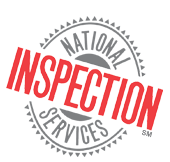Serious health risk, simple solutions
Are you breathing in radon as you read this? A radioactive gas you can’t see, smell or taste, radon might well be lurking in your home or other buildings you own or spend time in.
Produced naturally by the decay of uranium and radium, radon is found in dangerously high levels in about 1 in 15 American homes. In fact, the Environmental Protection Agency (EPA) and the Surgeon General recommend testing all homes for this cancer-causing gas.
Of course, home isn’t radon’s only hangout. It can enter any type of building — offices, schools, hotels — and pose health risks to virtually anyone who spends time indoors.
The lung cancer connection
So why is radon such a problem? One simple (and lethal) reason: it causes lung cancer. The Surgeon General warns that radon is the second leading cause of lung cancer in the United States today. Only smoking causes more lung cancer deaths.
Here’s how radon harms your lungs:
- Radon gas is released as uranium and radium break down.
- Radon itself decays quickly, forming radioactive decay products.
- These radioactive decay products attach to dust particles in the air.
- You breath in the tainted dust particles, and as they begin to break down inside your lungs, they emit radioactivity that can damage lung tissue and lead to lung cancer.
- Smokers who are also exposed to heightened levels of radon are especially at risk due to the synergistic effect of these two hazards.
Radon doesn’t knock before entering
Radon comes up through the soil and typically enters buildings through cracks and gaps in foundations and crawlspaces. It can even invade structures via well water or the water table. Once inside, radon tends to get trapped and sometimes builds up to dangerous levels.
Radon is continuously being released outdoors, too, but without four walls to hold it in, it quickly dissipates into the atmosphere.
How does radon get in?
- Cracks in solid floors
- Construction joints
- Cracks in walls
- Gaps in suspended floors
- Gaps around service pipes
- Cavities inside walls
- Water supply (usually not a problem in areas with city water service)
- Sump pumps and perimeter drain systems
- Crawlspaces
Testing for radon
(don’t “just do it,” do it right)
Since you can’t see or smell radon, you need special equipment to detect it. You can buy devices to measure radon yourself, but these require some knowledge and skill — not to mention near-clinical conditions — to use properly. For example, everyday items like laundry soap, perfume, aerosols and cooking odors can throw off do-it-yourself radon readings. An inaccurate measurement can be worse than none at all if it scares you with a too-high reading, or worse yet, lulls you into believing your building is safe when it really isn’t.
We recommend you call a professional inspector for accurate radon test results. Look in the Yellow Pages under Building Inspection Services, Environmental Consulting and Testing or Radon.
National Inspection Services provides accurate radon testing with results in as few as 48 hours. Our sensitive, computerized instruments use a pulsed ion chamber technology to detect airborne alpha radiation. A microcomputer records the number of alpha particles (emitted by radon daughters), stores the data for preprogrammed sampling intervals and calculates decay measurements.
Eliminating your radon problem
You can’t stop the soil beneath buildings from releasing radon, but you can eliminate radon build-up. If our testing shows radon is a health hazard in your building, we will recommend measures to correct the problem.
Often, ventilation systems such as air-to-air exchangers, sub-slab suction devices or fans will effectively whisk radon outdoors. Many homeowners have successfully installed these systems themselves, or have hired competent contractors to perform the work. Other times, fixing leaks or cracks in the building foundation, walls or floors will help. We do not perform such remedial measures (to do so would be a conflict of interest), but we can provide you with a list of local EPA-listed contractors who can.
